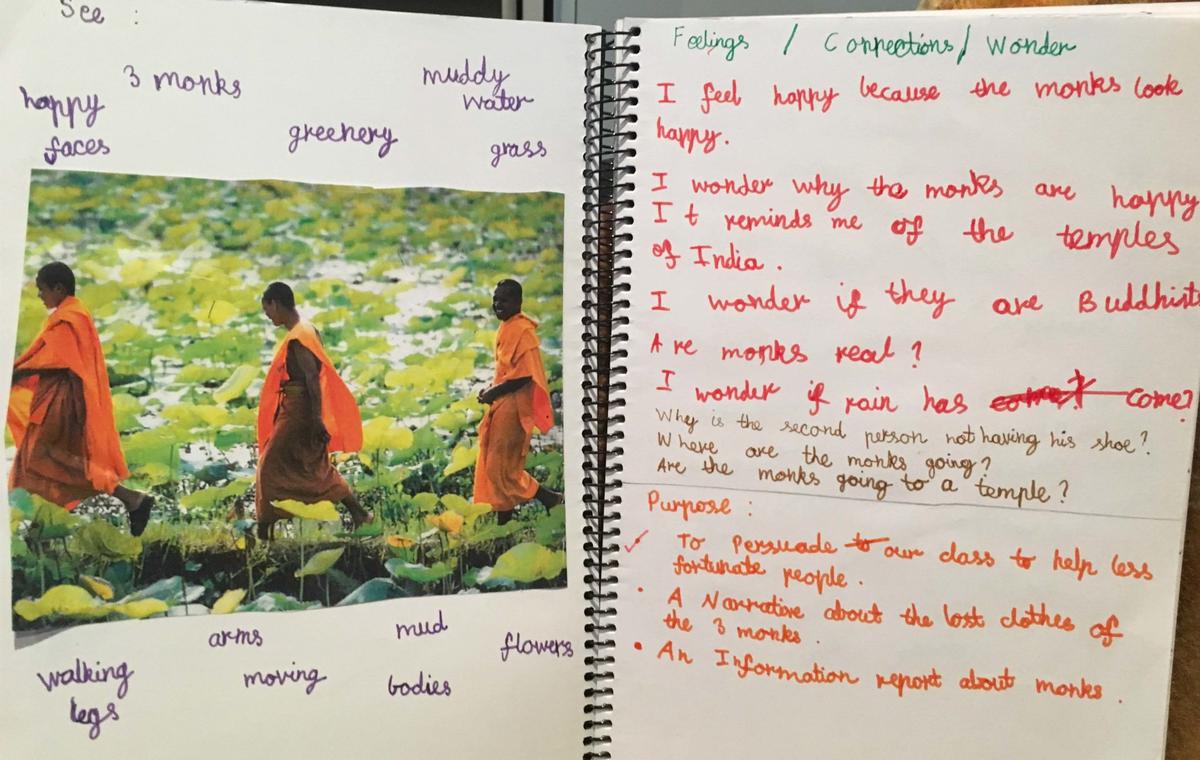Literacy
Melanie Pizzonia

Literacy
Melanie Pizzonia


Children write best about the things that are important to them and what they are interested in. It is writing that comes from what they know and what they have experienced.
A writer’s notebook is a tool students use to record the things they notice, observe, and think about. In a writer's notebook students unpack 'seeds' which are prompts to engage their thinking.
Writer's notebook entries can be any of a variety of ideas:
A writer’s notebook houses ideas that writers can return to in order to grow ideas, restructure, rethink, revise, connect ideas and ultimately choose from a variety of entries to publish for an audience. It supports the work of publishing. Notebook writing encourages a writer to take to the ‘long view’. What might start off as a small undeveloped idea has the potential to be developed into something fully formed. Students need daily sustained periods of time to write. The writer’s notebook helps give direction to those sustained times for writing, especially early in the year when establishing a classroom community that will support students’ writing throughout the year.
(adapted from www.education.vic.gov.au/school/teachers/teachingresources)


A writer's notebook seed is an object, picture, sketch or artefact that students can use as a writing prompt to help them develop ideas. When a seed is meaningful to a student, they may be more engaged in the craft of writing. At different stages throughout the year students from across F-6 might be asked to bring 'seeds' to school to use in their individual or whole class writer's notebook.
Here are some ways to encourage your child with their writing: